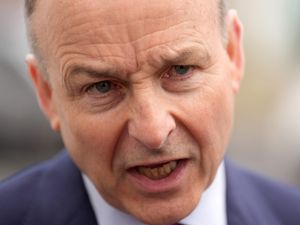Black students at less selective universities more likely to drop out – watchdog
Undergraduates at universities with higher entry requirements are more likely to continue with their studies in the second year, a report has found.

Black students who attend universities with lower entry requirements are more likely to drop out of degree courses than their peers, analysis suggests.
Students at the most selective universities across England are the most likely to continue with their studies into their second year whatever their ethnicity, according to the Office for Students (OfS) report.
The higher education watchdog looked at access and continuation data for UK undergraduates at English universities between 2013-14 and 2018-19 – broken down by ethnicity and type of institution.
Black entrants to less selective institutions had the lowest continuation rates (83%) of any ethnic group in 2017-18, the report found.
Meanwhile, the continuation rate for white students at higher tariff providers was 96.1% in 2017-18 – seven percentage points higher than white students at less selective providers (89.1%).
The continuation gap between students at higher tariff institutions – universities with higher entry requirements – and those at other providers is even larger among other ethnic groups, the analysis revealed.
In 2017-18, the continuation rate for black students at higher tariff providers was 94.3% – 11.3 percentage points higher than black students at other providers (83%).
The analysis used data from the Higher Education Statistics Agency (Hesa) and the Education and Skills Funding Agency’s Individualised Learner Record (ILR) to assess drop-out and entry rates for different ethnic groups.
The proportion of black, Asian and minority ethnic (BAME) students entering higher tariff universities increased year on year between 2013-14 and 2018-19, the report highlighted.
There was a higher proportion of students from an Asian background at higher tariff providers (15.7%) compared with other providers (13.3%) in 2018-19.
But only 5.3% of entrants to these top universities were black, compared with 12% at other providers.
Of the analysis, Chris Millward, director for fair access and participation at the OfS, said: “It shows that there are differences between ethnic groups, types of provider and subject areas.
“The factors influencing these patterns are complex, so it will be important for universities and colleges to explore their own situation.”
He added: “There are real differences between – and often also within – student groups, which universities should look to understand and address.
“This is true for the patterns of continuation for black students if they don’t attend the higher tariff providers, and for the patterns of access for white students if they come from the most disadvantaged neighbourhoods.”





